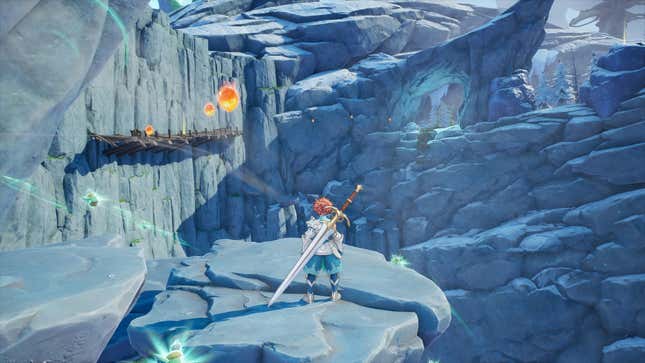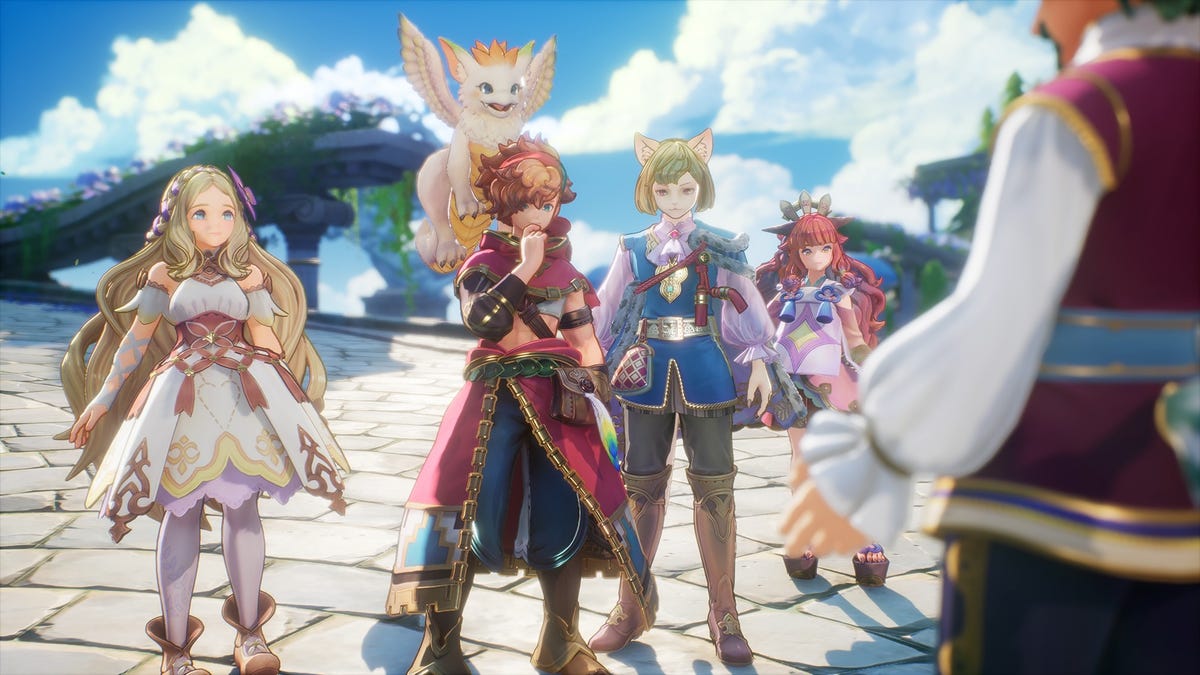I’m filling in some gaps in my RPG history. I’ve been playing series like Final Fantasy since I was a kid, but there are countless other landmark RPGs I’ve rarely touched, including the fantasy RPG Mana series, which splintered off of Final Fantasy Adventure in 1991. The only installment in the long-running franchise I’ve played, in fact, is Children of Mana on the Nintendo DS, which I loved! Nonetheless, I’m on a journey to right my wrongs, so when I was presented with the chance to see the first mainline Mana game since 2006 at PAX East last week, I had to check it out for myself.
6 Things To Know Before Starting Persona 5 Tactica
Pre-order Visions of Mana: Amazon | Best Buy | Humble Bundle
Visions of Mana feels vintage
My immediate impression, and what has lasted longest, is the storybook quality of Visions of Mana, which looks beautiful, even in the work-in-progress state in which I saw it. It’s got that 3D animated movie quality to it that some of its contemporaries, mostly Dragon Quest, have continually revisited, and it lends Visions of Mana a charm that’s absent from the grim and hyper-realistic visuals of games like Final Fantasy XVI. It’s downright cherubic, maybe even bordering on infantile, which I could see being a turn off to some and a boon to others who have been with the series their whole lives. Mana is, after all, a series that’s been around since 1991. For me, the art style was whimsical, though the build I was playing seemed to be buckling a bit as it tried to render the vivacity and lushness of the world around us.
Beginning in a grassland known as the Fallow Steppe, I familiarized myself with the game’s mechanics before diving into a more directed segment of the preview that culminated in a boss fight. It was here that I learned that, contrary to what I’d believed to be true, the Mana games are action-RPGs! Imagine my surprise when I launched an attack and my companions broke into an open brawl rather than wait for commands from me. As I acclimated to the kind of game Visions of Mana is though, the cracks in its facade became more prominent. It’s not that an action-RPG needs to be quick and flashy, but it needs to feel right in a way that Visions’ bizarre mix of floaty movement and weirdly heavy combat undermines. The somewhat clunky combat, however, offers echoes of older games—Visions of Mana feels vintage.
That old-school feel is very apparent in the Fallow Steppe locale which wasn’t necessarily bursting at the seams with quests to do or points of interest. I want these worlds to pull me in rather than feel like set dressing, but I also recognize that the other end of that is a game more or less like Final Fantasy VII: Rebirth, a title I love that absolutely has too much content. The Fallow Steppe felt archaic, but I can’t say for certain if it was due to old-school emptiness or a more modern, accidental gameplay void. It was however joyful to run around the Steppes on Pikul, a new mount in Visions of Mana that the creators have likened to a giant yorkshire terrier that I would die for.

Visions of Mana has problems and promise
While I was able to wrap my head around Visions of Mana’s tempo, its combat never quite clicked for me. The dodge, for example, felt great and came in clutch during my (hitless) run at the boss at the end of the demo. However, the addition of aerial attacks and movement felt like a bit of a fumble. In most other games of its ilk, these are quick follow-up techniques that display how lithe and capable the player character is. Sans a fleshed-out combo system (our preview seemed to only offer a light and heavy combo), and paired with the characters’ floatiness, it just feels kind of…there.
Maybe it was the build I played (which chugged on the more intensive fights), but fighting in Visions of Mana never gelled in the way I needed it to in order to call it capable or cohesive. Switching off of the main party member to more rogue-adjacent characters felt like a step in the right direction, but the slice of the game we were given access to also didn’t feel like a great showcase of how the characters differ in playstyle. Typically, a meatier warrior might trade accuracy for strength and sweeping attacks, but the other party members felt pretty similar to the main one, even when I was prompted to go back through the demo, change classes and elements, and play the end fight again.
Elementals, which are the Mana series’ equivalent of summons, played a helpful role both in combat and exploration and exposed me to some of the depth I was looking for elsewhere. The wind elemental helped the party traverse a chasm on a mountainous level, and doubled up as an assist skill that’d juggle enemies in the air. The moon elemental slowed enemies down, opening them up to attacks, which was incredibly helpful as it allowed party members to unleash an ultimate attack after doing enough damage to fill up its gauge. While their implementation was fairly simple, I’m a sucker for an ultimate ability that makes number go up (or in this case, just all over the screen). It all came together wonderfully in the final fight when I went up against a humongous ant—which was a great show of the technical power and artistry of Visions of Mana—that actually pushed me to learn how to make it all work in tandem. Compared to the boss battle, most of the fights in my preview were elementary and straightforward.
Despite what sounds like a hefty list of reservations, I’m excited for Visions of Mana. I think there’s a depth that I couldn’t quite tap into that became more apparent in the final boss encounter. The game might also feel tremendously better when it is polished and about to release, but the build I was playing struggled to work as much as I did at times. Nonetheless, there’s a whimsy and fairytale-like charm to the character and world design on display that makes me want to fall in love with Visions. It’s certainly not lacking for the vibes I sought after in the RPGs of my youth, but it’s got a ways to go to prove it’s not out of step or too far behind.
Pre-order Visions of Mana: Amazon | Best Buy | Humble Bundle
.
